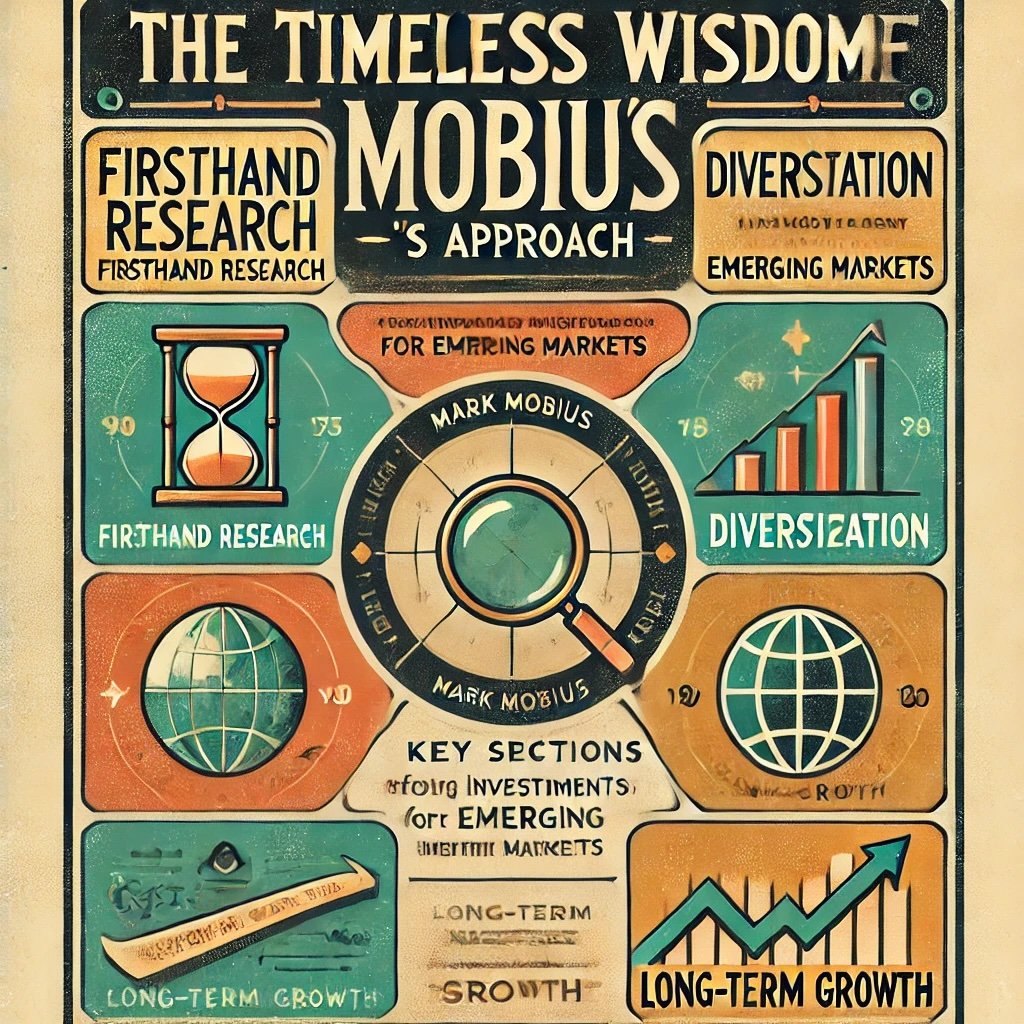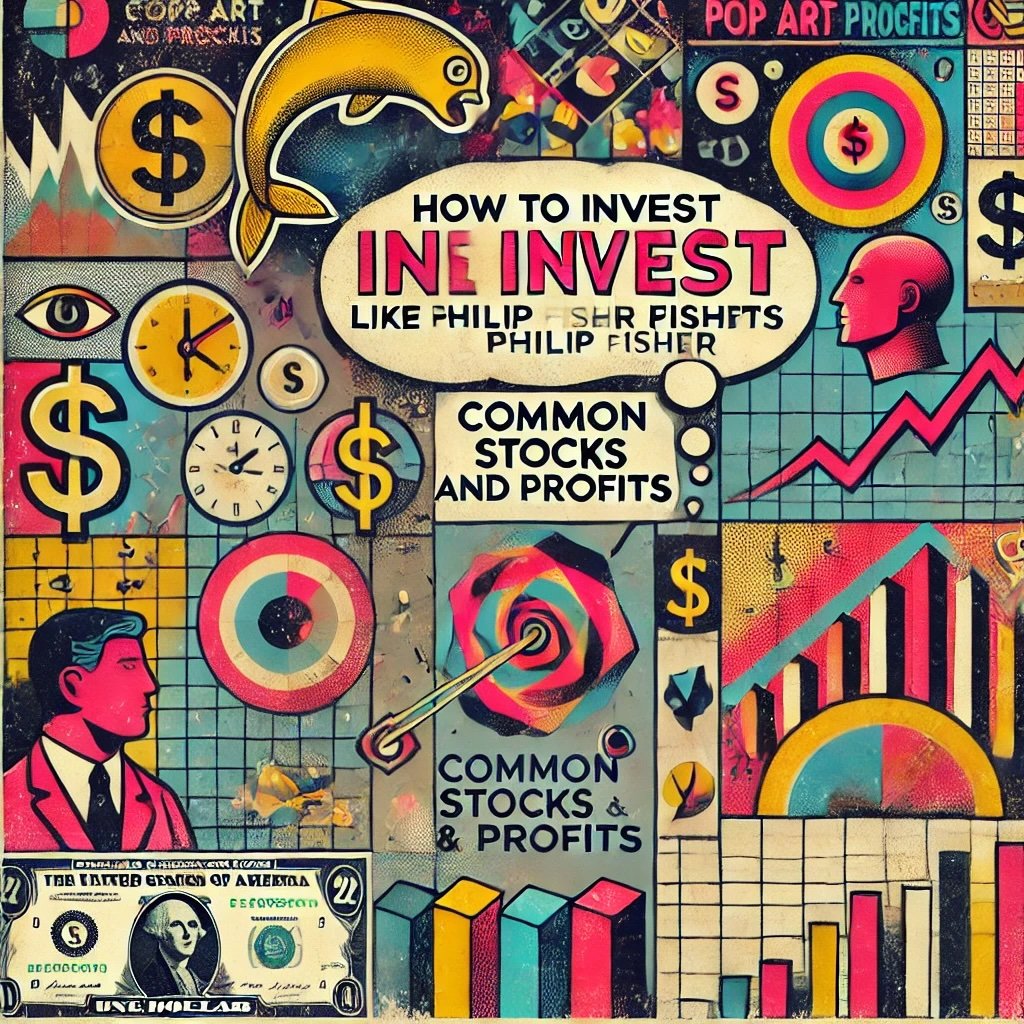Mark Mobius isn’t just a name in finance. He’s a trailblazer in the world of emerging markets. Known for his sharp insights and groundbreaking investment strategies, Mobius carved a unique path by focusing on high-growth economies often overlooked by mainstream investors. With decades of experience, he’s credited with bringing attention to the economic potential in regions like Asia, Latin America, and Eastern Europe. While others hesitated, Mobius embraced these fast-changing markets, turning risks into tremendous opportunities.
source: moneycontrol on YouTube
Starting his career in research and consultancy, Mobius eventually joined Franklin Templeton Investments, where he established and led the Emerging Markets Group. Here, he managed over $50 billion in assets, making Franklin Templeton one of the largest emerging market funds globally. Through this role, he didn’t just invest—he transformed how the financial world viewed these markets.

Mark Mobius: A Pioneer in Emerging Markets
So, why focus on Mark Mobius? This article will dive into the investment strategies that set Mobius apart. His approach isn’t just about numbers or stock-picking; it’s about understanding the unique dynamics of economies in various stages of development. We’ll explore how Mobius applied a mix of on-the-ground research, diversification, and a long-term perspective to achieve significant gains in volatile markets.
For investors curious about the possibilities in emerging markets, Mobius’s strategies offer a roadmap. His methods focus on harnessing potential while carefully navigating risks, making them valuable for anyone interested in global investing.

The Appeal of Emerging Markets
Emerging markets are dynamic. They often experience high growth rates, new infrastructure projects, and expanding middle classes. But they’re also unpredictable, with factors like political instability and currency fluctuations introducing risks. Mark Mobius saw potential in these challenges. His philosophy was simple yet effective: understand the market deeply and stay invested for the long term. This approach allowed him to capitalize on periods of rapid growth while weathering short-term market storms.
- High Growth Potential: Mobius was drawn to markets where economies were expanding rapidly.
- Diverse Opportunities: From consumer goods to energy, emerging markets offer diverse sectors for investment.
- Unique Risks and Rewards: Mobius’s success came from balancing the highs and lows of these dynamic regions.
Tip: Emerging markets aren’t for the faint of heart. If you’re considering investing in these regions, a well-researched, long-term strategy is key.
What You’ll Learn
We’ll cover the core principles of Mark Mobius’s investment strategy. You’ll learn how he conducts on-the-ground research, gathering insights from locals and understanding the nuances of each economy. We’ll discuss his diversification approach—spreading investments across countries, industries, and asset classes to reduce risk. Finally, we’ll look at how he manages risk in emerging markets, particularly in regions with high political and economic volatility.
Here’s what we’ll cover:
- Research Techniques: How Mobius stays informed and connected with local economies.
- Diversification Strategies: Balancing risk through a broad investment approach.
- Risk Management: Practical ways to safeguard investments in unpredictable environments.
By the end, you’ll have a solid understanding of what it means to invest like Mark Mobius. Whether you’re a seasoned investor or a beginner, his approach provides valuable lessons for navigating high-growth but volatile markets.

Who is Mark Mobius?
From Academia to Investment Legend
Mark Mobius’s path to becoming a legendary figure in finance started in the world of academia. Born in New York City, he later moved to Germany, where he completed much of his early education. Mobius went on to earn a Ph.D. in economics from MIT and then pursued further studies, including a degree in communications. His academic background gave him a solid foundation in economic theory and international relations, which would later shape his approach to investing.
Before diving into the world of emerging markets, Mobius worked as an economic consultant, gaining experience across several continents. His exposure to diverse economies helped him develop a unique perspective on global finance, one that went beyond traditional, Western-centric views. This perspective became the cornerstone of his career and paved the way for his future success in the relatively uncharted territory of emerging markets.

Key Achievements and Career at Franklin Templeton
In 1987, Mobius joined Franklin Templeton Investments, a turning point that would define his career and establish him as a pioneer in emerging markets. At that time, emerging markets were often ignored by mainstream investors due to their volatility and perceived instability. But Mobius saw potential where others saw risk. As the head of Franklin Templeton’s Emerging Markets Group, he led efforts to build a portfolio that included regions such as Asia, Latin America, and Eastern Europe. Under his guidance, the fund grew to manage over $50 billion in assets, transforming Franklin Templeton into one of the world’s largest and most respected emerging markets funds.
Mobius’s influence extended beyond Franklin Templeton. He advocated for the importance of transparency and good corporate governance in emerging markets, believing that these factors were crucial for sustainable growth. He frequently engaged with company leaders and even local governments, pushing for practices that would make these markets more attractive to international investors.
- Established Franklin Templeton’s Emerging Markets Portfolio: Grew it into a multi-billion-dollar fund.
- Advocated for Transparency: Pushed for corporate governance and accountability in emerging economies.
- Global Influence: Worked with local leaders and institutions to improve market conditions.
Tip: When investing in unfamiliar markets, a strong focus on transparency and governance can help safeguard your investments.
Why Emerging Markets?
For Mobius, emerging markets offered a mix of risk and reward that no other investment category could match. He was particularly drawn to regions where economies were rapidly evolving, driven by factors like population growth, rising middle classes, and increased industrialization. Unlike developed markets, where growth rates tend to be slower, emerging markets provided the high-growth opportunities that Mobius found so compelling.
Mobius believed that emerging economies could achieve rapid development through foreign investment and local innovation. His approach was hands-on, involving frequent travel to assess opportunities firsthand. He interacted directly with local businesses, gaining insights that could only be acquired through face-to-face meetings. This approach wasn’t just about numbers; it was about understanding the cultural and economic nuances that drive growth in these regions.
- High-Growth Potential: Emerging markets often exhibit faster growth rates than developed markets.
- Firsthand Research: Mobius traveled extensively to gather insights directly from local sources.
- Cultural Insight: Understanding the culture and economy of a region was essential to his investment approach.
Tip: Emerging markets investing isn’t solely about economic data; getting to know the culture and local dynamics is equally valuable.

The Appeal and Challenges of Emerging Markets
Why Emerging Markets?
Mark Mobius’s fascination with emerging markets was rooted in their extraordinary growth potential. These markets—spanning Asia, Latin America, Eastern Europe, and Africa—offered the kind of opportunities that developed economies couldn’t match. Unlike mature markets with slower growth rates, emerging economies were in a phase of rapid transformation. Population growth, urbanization, rising middle classes, and industrial expansion were driving forces in these regions. Mobius saw that as infrastructure developed and people gained access to new services, consumer demand would skyrocket, opening doors for investment in sectors like technology, finance, and consumer goods.
For Mobius, the appeal wasn’t just about short-term gains; it was about tapping into a long-term growth trajectory. He believed that these economies would become increasingly significant players in the global economy over time, and he wanted to be ahead of the curve. Emerging markets, in his view, represented both a challenge and an opportunity for those willing to navigate their complexities.
The Opportunities: High Growth and Diversification
One of the biggest draws of emerging markets is the potential for outsized returns. These economies often experience higher growth rates than their developed counterparts, leading to rapid expansion in key industries. This growth offers investors opportunities that might not be available in developed countries, where markets are already saturated and growth can be incremental. Sectors like consumer goods, technology, and energy are particularly attractive, as demand for these products and services rises in developing economies.
Additionally, investing in emerging markets provides portfolio diversification. When developed markets face slowdowns, emerging markets may continue to grow, allowing investors to balance their portfolios. By diversifying across different countries and industries, Mobius could reduce the impact of downturns in any single market.
- High Growth Potential: Faster growth rates in emerging markets present unique opportunities for investors.
- Sector Opportunities: Key sectors like technology and consumer goods often grow at accelerated rates.
- Diversification Benefits: Emerging markets offer a hedge against slowdowns in developed economies.
Tip: To maximize diversification, consider investing across multiple regions and industries within emerging markets.
The Challenges: Volatility, Political Instability, and Currency Risk
Despite their promise, emerging markets are notoriously volatile. Mobius understood that these regions come with unique risks that can be daunting to many investors. Political instability is a common challenge, with some emerging economies experiencing sudden policy changes or even government upheavals. This instability can lead to market disruptions and make it difficult for businesses to operate predictably. For Mobius, understanding the local political landscape was a critical part of his strategy. He often worked closely with local governments and regulators to gauge stability and manage these risks.
Another significant challenge is currency risk. Emerging markets often have weaker, less stable currencies than developed nations. Exchange rate fluctuations can impact returns, particularly if a currency depreciates sharply against the investor’s home currency. Mobius developed strategies to hedge against these risks, using his understanding of macroeconomic trends to anticipate currency movements.
- Political Instability: Policy changes or government instability can disrupt market conditions.
- Currency Risk: Exchange rate fluctuations can reduce the value of returns.
- Market Volatility: High growth potential often comes with increased price volatility.
Tip: For those entering emerging markets, consider using hedging strategies to minimize currency-related risks.
How Mobius Identified Opportunities Amidst Risks
While others saw these risks as deterrents, Mobius saw them as challenges to overcome. He developed a deep understanding of each market, taking an on-the-ground approach. Mobius traveled extensively to meet with local leaders, businesses, and even consumers. He sought firsthand insights that couldn’t be captured through reports or data alone. This allowed him to identify markets with high growth potential and to determine which risks were manageable.
Mobius also took a long-term view. He understood that volatility and risk were inevitable but believed that over time, emerging markets could offer substantial rewards. By focusing on the fundamentals of each economy and keeping an eye on macroeconomic trends, he could make strategic decisions that minimized short-term noise. This approach allowed him to tap into economies that were primed for growth, despite the surrounding risks.
- On-the-Ground Research: Mobius’s firsthand approach helped him understand local market conditions.
- Long-Term Focus: Staying invested despite volatility allowed Mobius to capture substantial returns.
- Strategic Risk Management: By focusing on economic fundamentals, Mobius minimized the impact of market disruptions.
Tip: When investing in volatile markets, having a long-term perspective can help you ride out temporary setbacks while capturing long-term growth.

Core Principles of Mobius’s Investment Strategy
On-the-Ground Research
Mark Mobius believed in a hands-on approach to investing, especially when it came to emerging markets. Unlike many investors who rely on secondhand reports and analyses, Mobius preferred to gather firsthand knowledge. He would visit countries, meet with company leaders, and speak directly with locals to understand the business environment in ways that financial data alone couldn’t convey. This on-the-ground research allowed him to capture insights into a company’s operations, management, and market conditions that were often missed by others.
Being in the field helped Mobius get a feel for both opportunities and risks that could only be detected through direct interaction. He might visit a factory, assess its infrastructure, or speak with employees about workplace culture. This thorough level of engagement provided a comprehensive view of potential investments, helping him make more informed decisions.
- Firsthand Knowledge: Mobius valued direct, on-the-ground research over secondhand reports.
- Company Visits: Site visits and personal interactions provided a fuller picture of a company’s true value.
- Understanding Nuances: Local insights allowed him to spot risks and opportunities that data alone might miss.
Tip: When considering investments in unfamiliar markets, don’t underestimate the value of firsthand research.
Long-Term Perspective
For Mobius, patience was key to capturing the full potential of emerging markets. He understood that emerging economies often face short-term fluctuations due to factors like political shifts, currency volatility, or global economic trends. However, he believed that these markets had long-term growth potential that could reward those willing to ride out the ups and downs. Rather than reacting to short-term volatility, Mobius focused on the underlying fundamentals of each economy and company he invested in.
This long-term approach allowed him to hold onto assets through difficult periods, confident that growth would eventually rebound. He frequently emphasized that emerging markets were not a quick, short-term play; they were a journey requiring discipline and a long-term mindset.
- Patience Pays: Long-term investing allowed Mobius to capture growth beyond short-term volatility.
- Focus on Fundamentals: Instead of reacting to market noise, he focused on a company’s core value.
- Avoiding Short-Term Trades: Staying invested for the long run maximized returns in dynamic markets.
Tip: Patience is a powerful asset in emerging markets; short-term fluctuations don’t always reflect a company’s or a market’s true potential.
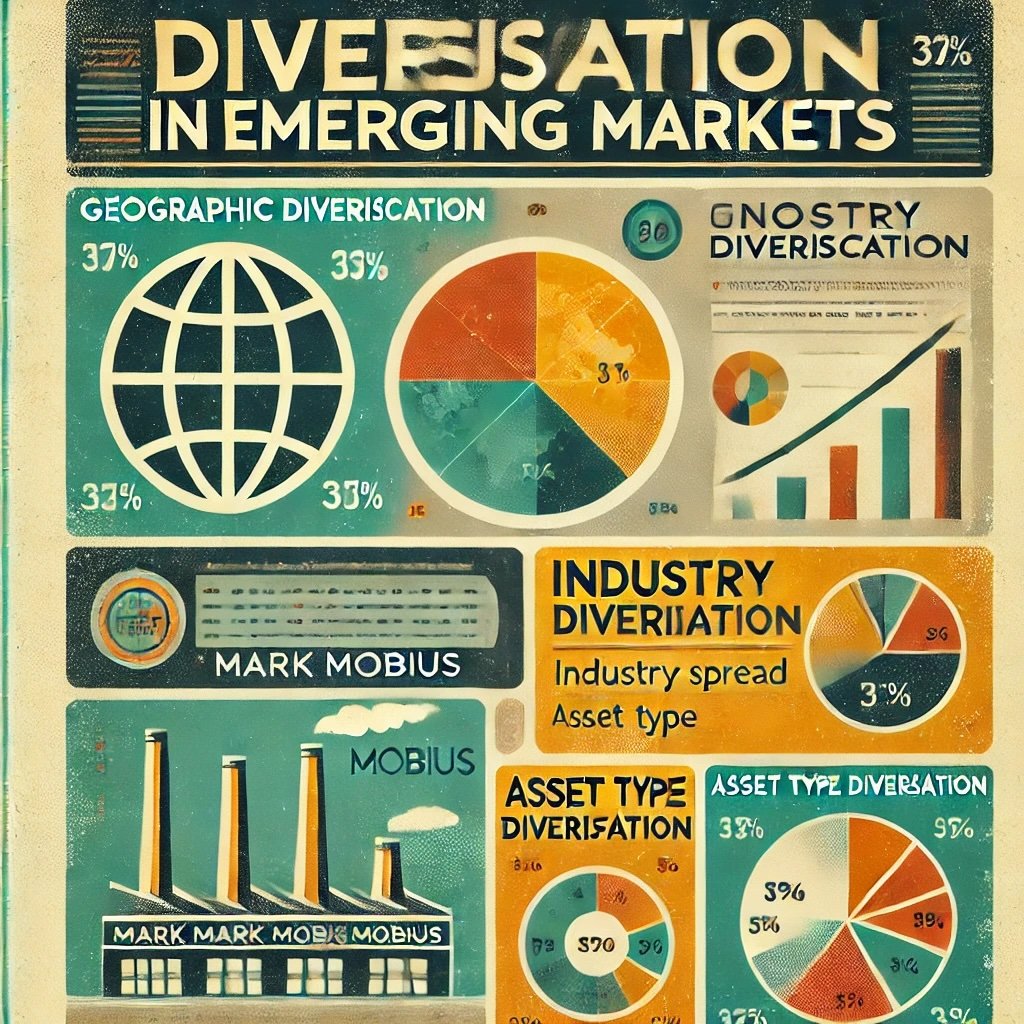
Diversification
Mobius knew that diversification was essential for managing risk, especially in emerging markets where volatility could vary significantly between regions and sectors. By diversifying across countries, industries, and asset types, he could minimize the impact of any single market downturn on his overall portfolio. For example, if one region experienced political instability, other markets in his portfolio could help balance the risk.
He didn’t just diversify geographically. Mobius spread his investments across various industries—like technology, consumer goods, and energy—recognizing that different sectors respond differently to economic shifts. This diversification reduced the likelihood of large losses due to sector-specific or regional disruptions and allowed him to benefit from multiple areas of growth.
- Regional Diversification: Investing across multiple countries helped reduce risks tied to any single market.
- Sector Diversification: Spread investments across industries to cushion against sector-specific downturns.
- Asset Class Diversification: Included a mix of stocks, bonds, and other asset types.
Tip: Diversify across regions and sectors to protect against unexpected volatility in emerging markets.
Risk Management
Investing in emerging markets comes with unique risks, and Mobius developed strategies to manage them effectively. Political instability, currency fluctuations, and economic shifts are common in these markets, and each requires careful consideration. Mobius took a proactive approach by staying well-informed about geopolitical events and macroeconomic trends. His firsthand research often provided insights into potential political or economic shifts that could impact his investments.
Mobius also used currency hedging to protect his portfolio from exchange rate fluctuations. Since many emerging markets have weaker or more volatile currencies, this strategy was crucial in preserving returns when converting them back into stronger currencies like the dollar. Additionally, he was mindful of position sizing, keeping individual investments to manageable levels to limit losses in case of market disruptions.
- Geopolitical Awareness: Monitoring political events helped him anticipate market shifts.
- Currency Hedging: Used hedging strategies to manage the risks of currency depreciation.
- Position Sizing: Kept individual investments to manageable sizes to minimize potential losses.
Tip: In emerging markets, understanding and planning for political and currency risks can be as important as analyzing company fundamentals.
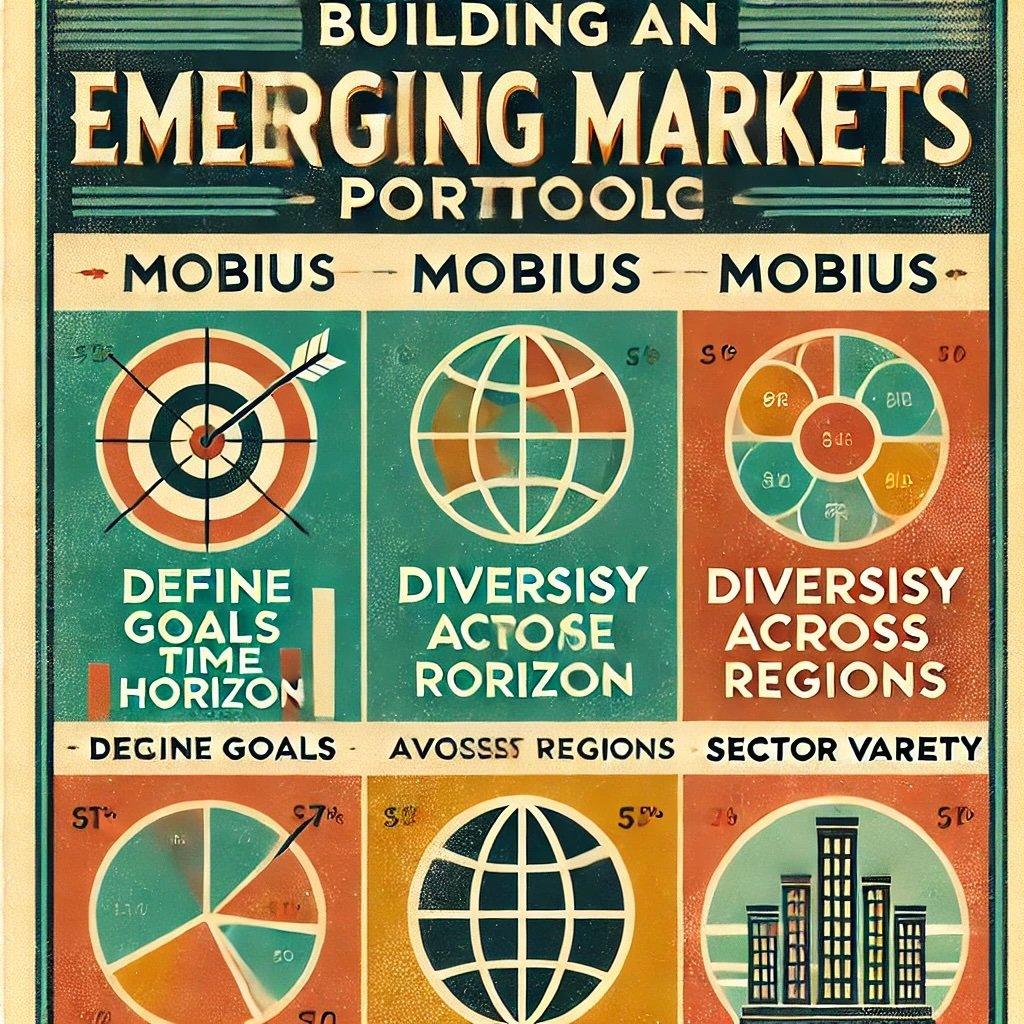
Building an Emerging Markets Portfolio Inspired by Mobius
Steps to Construct an Emerging Markets Portfolio
Building a portfolio focused on emerging markets takes a strategic approach. Following Mark Mobius’s example, the first step is to define your investment goals and time horizon. Emerging markets are known for their high growth potential but can be volatile, so having a clear understanding of your risk tolerance and timeline is essential. Mobius approached emerging markets with a long-term view, recognizing that while short-term swings can be significant, the long-term growth potential can more than compensate for interim challenges.
Once you’ve set your goals, start by selecting a range of countries and sectors. Emerging markets cover regions with diverse economies, from industrial giants like China to rapidly developing countries in Latin America and Southeast Asia. Choosing a balanced mix of countries can help reduce the impact of a downturn in any single region. Additionally, focus on a variety of industries, as sectors such as technology, finance, and consumer goods tend to show resilient growth in these regions.
- Define Goals and Time Horizon: Know your risk tolerance and commit to a long-term view.
- Diversify Across Regions: Spread investments across several countries for geographic balance.
- Sector Variety: Include multiple sectors to balance industry-specific risks.
Tip: Start with a manageable number of investments, and as you become more familiar with each market, you can broaden your portfolio.
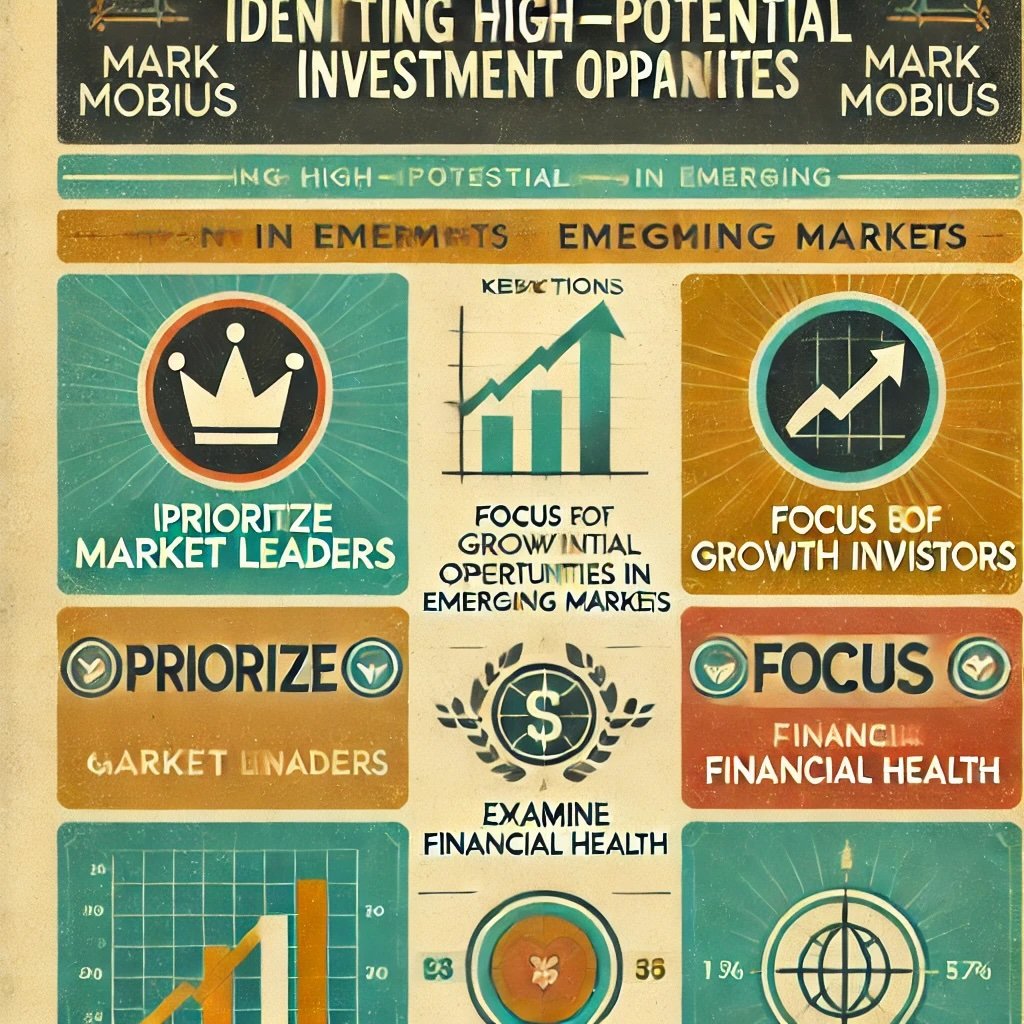
Identifying High-Potential Investment Opportunities
Identifying high-potential investments in emerging markets requires a blend of research and intuition. Mobius emphasized the importance of firsthand knowledge—getting to know companies and their local environments by visiting the regions in person or tapping into resources that offer local insights. Seek out companies that are leaders or have competitive advantages within their sectors. These might be businesses with a strong consumer base, robust infrastructure, or innovative products tailored to local demand.
One key tool Mobius used to identify promising stocks was to look at growth indicators such as revenue expansion, market share, and earnings potential. Companies that are steadily increasing their market presence or innovating within their industries tend to have greater growth potential. However, in emerging markets, you must balance potential with stability. Examine financial health indicators like debt levels, cash flow, and management effectiveness, as they reveal how well the company can navigate economic fluctuations.
- Prioritize Market Leaders: Look for companies with strong positions in their industries.
- Focus on Growth Indicators: Revenue growth and market share expansion are positive signals.
- Examine Financial Health: Stability is crucial in volatile markets, so choose companies with low debt and strong cash flow.
Tip: Stay updated on local news and trends, as they can offer insights into which sectors and companies are gaining traction.
Balancing Risk and Reward in a Volatile Portfolio
Balancing risk and reward is a delicate art in emerging markets. Mobius’s approach involved diversification and careful position sizing. By spreading investments across different regions and sectors, he could reduce the risk of a downturn in one area affecting his entire portfolio. Each position should be sized according to its potential reward and associated risk. For instance, higher-risk investments may be kept to smaller allocations, while more stable companies can take a larger share.
Another technique is to hedge against currency risks. Currency volatility is common in emerging markets, and it can significantly impact returns when converting profits back to your base currency. Consider using currency-hedged funds or ETFs, or focus on countries with more stable currencies if direct hedging is unavailable. Furthermore, monitoring macroeconomic indicators such as inflation rates, GDP growth, and political stability will help you stay ahead of potential risks and adjust your portfolio as needed.
- Diversify and Position Size: Balance riskier, high-growth stocks with stable investments.
- Hedge Currency Exposure: Use currency hedges or focus on stable currencies where possible.
- Monitor Macroeconomic Indicators: Stay informed on economic shifts to make timely adjustments.
Tip: Reevaluate your portfolio regularly to ensure it aligns with your goals and the current market landscape.
